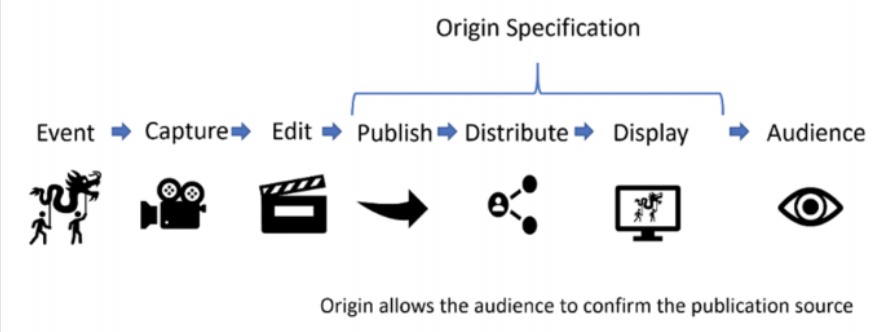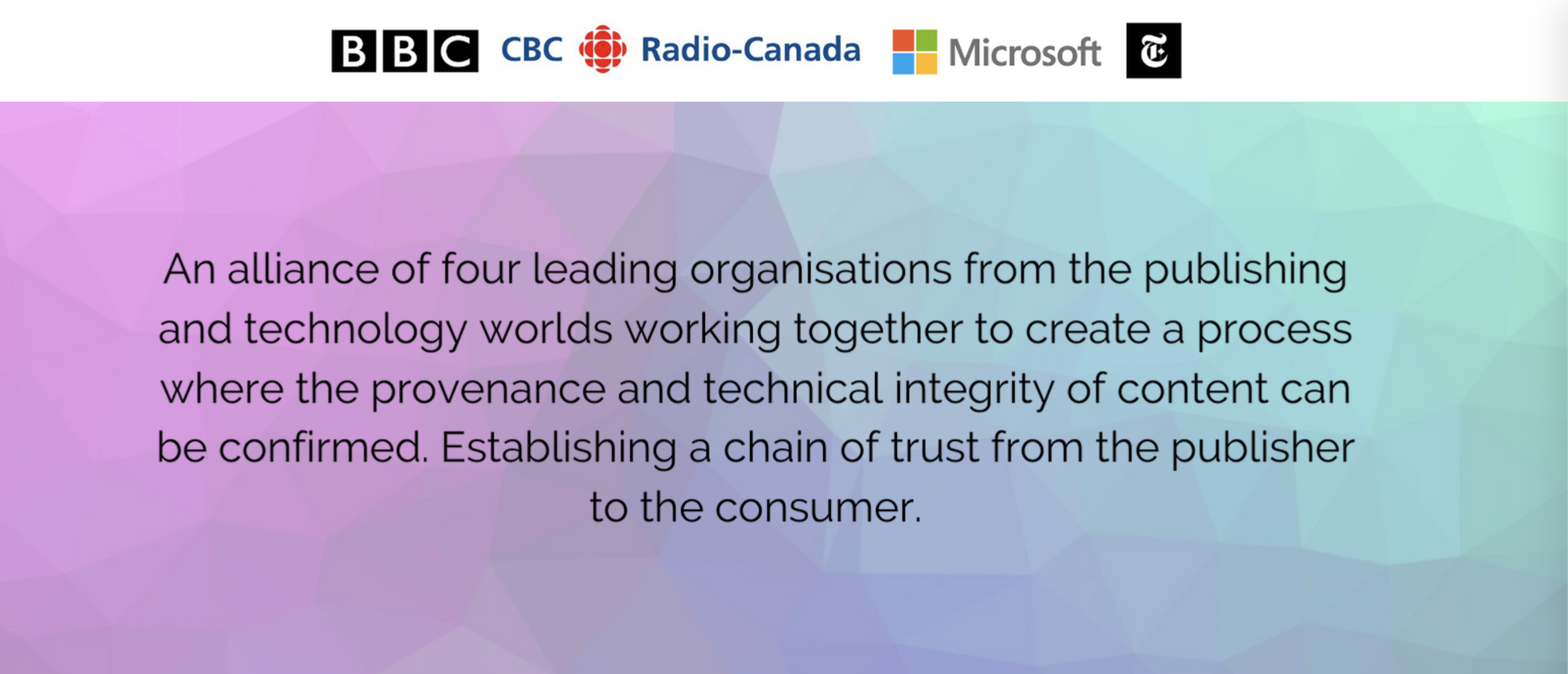When it comes to news consumption, new AI technologies have made the average user struggle to tell when information has been altered. With less confidence in information accuracy and those companies responsible for producing it, a complex media ecosystem continues giving birth to an online space where widespread content currently flows with both ease and rapidness. In response to fabricated news, several tech and news companies have together launched an attempt to authenticate their own content and expose manipulated information with less transparent purposes. By rethinking a compound end-to-end process, Project Origin is thus born, with the potential to permeate into the information systems we heavily depend on today.
Problem Analysis: The Issue of Disinformation and Authenticity
Back when press offices and communication departments released content for propaganda purposes, news receivers could immediately relate this content to identifiable sources. With the introduction of a decentralized network like the Internet, it is this same decentralized network architecture and principles of openness which allow news stories and articles to come from any news source. As Lessons from the History of the Internet signals, anyone can nowadays retrieve and contribute with the creation of information, from and to any device connected via Internet, regardless of whether the content or source has been manipulated at some point. For news gatekeepers, the augmented reach of fabricated news is, therefore, an aggravating challenge.
Whether in the form of deep fakes, mis-contextualized or fabricated content, disinformation keeps spreading into news information systems, making it hard for audiences to discern its deceiving nature as it is purposely created to be harmful and misleading. Recent technological advancements have facilitated the production and propagation of synthesized information, a byproduct of machine learning processes and artificial intelligence which keep arguably being used to fulfill questionable and self-interested purposes. Disinformation therefore becomes ubiquitous – an imminent threat to convoluted news media ecosystems.
Unlike news organizations who perform media functions to enhance democracy, disinformation results in damaging consequences, including sabotaging individual reputations, manipulating democratic processes like elections, and overall, undermining journalism’s credibility.
In an information economy, any stakeholder involved in the news value chain is capable of deriving value from their assets, and news publishers are no exception. As disinformation appears more subtle, it becomes hard to verify both the news content and their alleged sources of origin. When manipulating content, disinformation producers thus ultimately benefit from publishers’ names and reputation, and translate their authority into their manipulated content. Unlike news organizations who perform media functions to enhance democracy, disinformation results in damaging consequences, including sabotaging individual reputations, manipulating democratic processes like elections, and overall, undermining journalism’s credibility.
Project Origin: ‘Authenticating Content’?
Altering content can certainly result in large gains for their perpetrators, yet contrarily big trade-offs for those same news consumers who become unawarely exposed to content lacking authenticity. What distinguishes Project Origin from other initiatives is their pursuit for ‘media integrity’. Through media provenance authentication, Project Origin’s mission is to clarify the media provenance of information from origin to end, ensuring that people see content that was produced legitimately by its purported sources.
To detect content manipulation, this initiative seeks to align those adjacent industries that are entrusted with the creation, edition, distribution and presentation of news information, and whose credibility remains undermined by those disinformation publishers who impersonate them. Accordingly, a mechanism of proof indication is being developed, consisting of: (1) digitally signed links that provide verifiable tracing back of media content to the publisher, and (2) validation checks to identify if materials were not altered during distribution.

The logic behind this project is to restore confidence in an arguably harmed trust media environment. By providing a measure for content legitimacy, users could reduce their uncertainty as to what news stories are believable, rather than just blindly placing their trust in them. With a combination of technical and journalistic knowledge, the multidisciplinary Origin team is redesigning the media provenance architecture and operational routes that information takes, from the moment of its original publication. For instance, any news – either text-based, audio, video, or image files – would receive an encrypted ‘digital print’ that would become imprinted since the point of its creation, and if manipulated, distributor platforms could act by flagging or removing them as inappropriate.

Drawbacks
Project Origin is a call-to-action that goes beyond watermarking content. In principle, it seeks to promote the creation and adoption of a cryptographic technology for large and small news publishers so that in the long run, a standard is established to easily identify the integrity of media content in real-time. Although a promising initiative, the success of media provenance may be built upon the performance of other actions. As argued in Deep Fakes, Fake News, and What Comes Next, the collaboration of social media platforms is pivotal, as Origin expects them to “choose the information they show on their page and how”. To the moment, social media platforms have taken their own measures against disinformation, yet with limited success. Without social media companies agreeing to incorporate the consensual provenance standard, progress would be hard to achieve.
Although the project invites stakeholders in the industry for collaboration, Origin remains a trial initiative led by its founders – a coalition between Microsoft, BBC, CBC/Radio-Canada, and New York Times – arguably empowering large news providers who already count with reputation. This opens the question about the implications of this technology for new or small-scale publishers, who have not yet gained sufficient trust, not to mention how any publisher organization involved in the project may count with their own agendas. It is imperative to clarify who would benefit most from this initiative, also as news sources who disseminate original content would be easily traced and exposed, compromising them especially in restrictive regimes.
Authentication of sources is arguably important to understand, and initiatives like Project Origin should not be dismissed, but revisited. Media provenance is a solution that reflects intolerance towards disinformation, and within reason. In line with Karl Popper’s ‘paradox of tolerance’, disinformation must not be tolerated as it compromises civilized discussion and prevents newsreaders from listening to reason and rational debate. However, we must not forget that, as these provisional solutions are now being tested by particular companies, and influencing public perceptions of trust, their legitimacy should remain under ongoing examination, and if applicable, become open to further regulations.
Cover: ar130405 via Pixabay
Edited by: Debby Mogot





